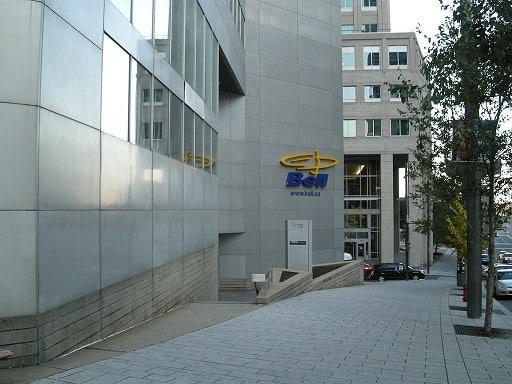Here’s why you should be buying BCE stock

Canadian telecommunications stocks have done very well over the past year and it’s no wonder, as investors continue to flee the riskier outposts of the market for safer ground. And it’s that defensive frame of mind which makes a name like BCE (BCE Stock Quote, Charts, News, Analysts, Financials TSX:BCE) a good option today, even if it’s a little pricey. So says portfolio manager Paul Gardner of Avenue Investment Management who has a number of reasons to be bullish on BCE.
The Canadian telco space has had its share of intrigue over the past year, much of its centring around Rogers Communications (Rogers Communications Stock Quote, Charts, News, Analysts, Financials TSX:RCI.B) and its proposed merger with Shaw Communications (Shaw Communications Stock Quote, Charts, News, Analysts, Financials TSX:SJR.B), one which has recently run into trouble from federal competition regulators. The two companies announced on Monday they’d be putting the deal on ice while they await the outcome of discussions with the Competition Bureau even as the Commissioner of Competition has filed an application to block the merger of Canada’s two largest cable providers on grounds that Canadians would come out more poorly with Rogers and Shaw combining powers.
BCE, which reports say had made a play for Shaw early on, is now likely feeling fine about staying out of the fracas and concentrating on concluding its massive, multi-year build-out of infrastructure across the country, one which has cost billions but sets the company up for years to come, says Gardner.
“We’ve been long-term holders of BCE and between the three we like BCE for a number of reasons,” Gardner said, speaking on BNN Bloomberg on Tuesday. “One, they have spent $5 to $10 billion going fibre-to-the-home and they’re almost done. I think this year is the largest capital expenditure, it’s about $5 billion, that will finally finish off all their their piping and that will be a tremendous advantage over the cable companies.”
Last year, Bell announced its accelerated capital investment plan aimed at expanding its broadband fibre and wireless networks, calling for an additional capex spend of between $1 and $1.2 billion over 2021 and 2022. That’s on top of the roughly $4 billion in capital expenditures the company has made annually over the past decade, which is all part of the aim of bringing access to fast wireless and wireline service to homes across the country and increasing the coverage of Bell’s 5G networks.
“With network leadership driving Bell’s momentum in the marketplace, BCE’s rock-solid financial position and a stable federal regulatory environment supporting spending on new network infrastructure, it’s the right time to step up with the unprecedented investment that Canada needs to build back,” said BCE President and CEO Mirko Bibic on the announcement of the infrastructure plan last February.
“As we mark our company’s 141st year of leading the way in communications innovation, the Bell team remains committed to advancing how Canadians connect with each other and the world with this bold new investment in our country’s future,” he said.
More recently, BCE reported with its first quarter 2022 earnings that the company is on pace to deliver about 900,000 new fibre locations along with mobile 5G to more than 80 per cent of Canadians this year, with BCE now saying about 80 per cent of its planned broadband buildout program will be completed by the end of the year.
BCE shareholders have certainly benefited of late. Even with a pullback over the past month or so the stock is still up over 16 per cent for the past 12 months and up five per cent year-to-date in 2022. Those may be small numbers but they’re coming at a time when much of the market has been heading south. Plus, BCE comes with a substantial dividend with a yield currently at 5.3 per cent.
Those share price gains may have some investors worried about jumping into BCE today but Gardner says it’s a good name own during the current market turbulence.
“BCE does trade at a somewhat expensive [level]. When we look at Enterprise Value to EBITDA, it trades around 8x, which historically is on the high side,” Gardner said. “But we do like Bell and we like its long term vision. We like the management and what they own and we like their media assets.”
“And most importantly, the distribution is not only sustainable but it’s going to increase and it has increased over years and years,” he said. “Finally, it’s a great defensive asset to own in this environment of not only rising interest rates, inflation and unknowns with the economy in the post-pandemic [environment],” Gardner said. “So, BCE has really done well as a defensive asset as well.”
BCE’s first quarter financials, delivered earlier this month, featured revenue up 2.5 per cent to $5.850 billion and adjusted EBITDA up 6.4 per cent to $2.584 billion.



